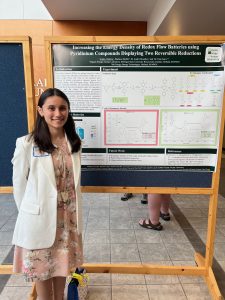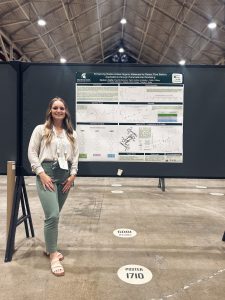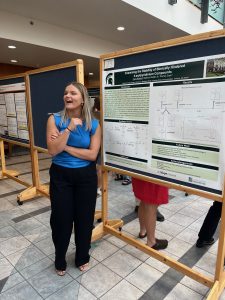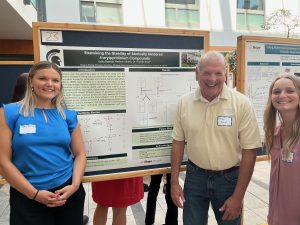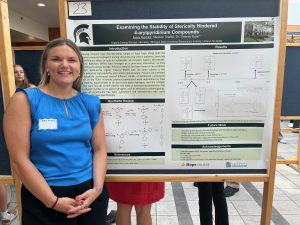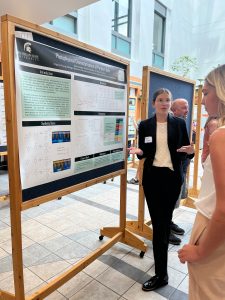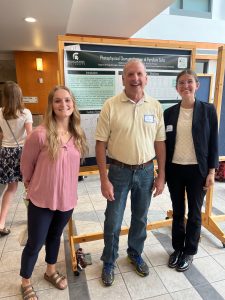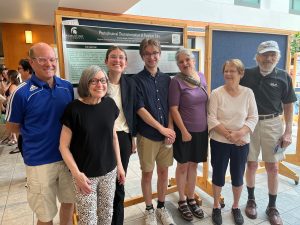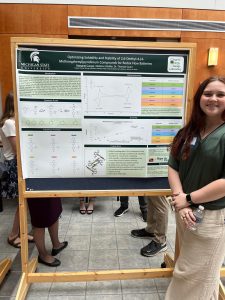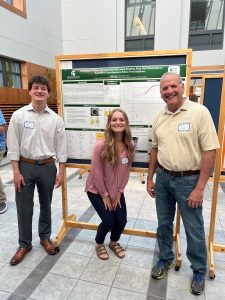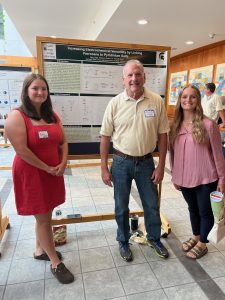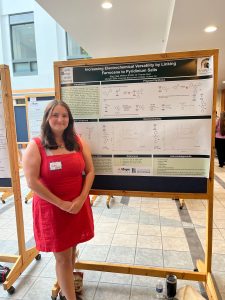Increasing the Energy Density of Redox Flow Batteries Using Pyridinium Compounds Displaying Two Reversible Reductions
Sophia Valdivia, Madison Shaffer, Andrii Varenikov, Thomas Guarr
Redox flow batteries (RFBs) are gaining interest to make energy storage more affordable and efficient. RFBs are an energy storage device that relies on the oxidation and reduction of soluble electroactive chemical species for charging, storing, and discharging energy. Redox-active organic molecules (ROMs) are promising electroactive materials due to their low production costs, low molecular weights, and the ability to achieve significant electrochemical potential differences between the anolyte and catholyte. Previous research has shown that pyridiniums with 1-electron systems provide reduction potentials between -1.5 V and -1.8 V, but they were not sufficiently stable. This work aims to increase the battery’s energy density by synthesizing a pyridinium with a 2-electron system while stabilizing the first reduction. Using cyclic voltammetry, the reduction potential is determined, and insight is gained about the stability of the radical.
Sophia first heard about our lab when Tom Guarr visited his alma mater, Benedictine College, to give a talk about his research. She attends Benedictine in Kansas, but she is from Texas and she had never been to Michigan before. She was very interested, applied, got accepted, packed up and came to Holland for the summer. She did some great synthesis work and we loved having her here! Thanks to Benedictine for sharing her.
